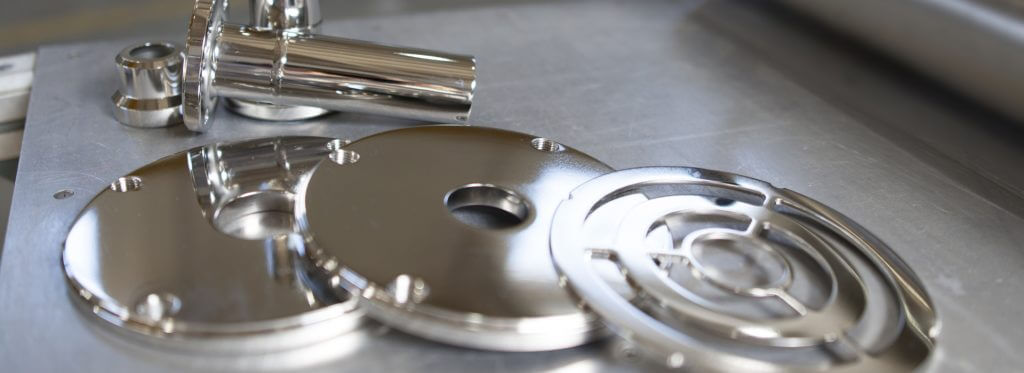- December 10, 2021
Electropolishing is a technique that can be used on a broad range of alloys, copper, stainless steel, carbon steel, titanium, stainless steel and metal finishing, and many more. For removing a coating of surface material from the metal surface, this “reverse plating” method utilizes a rectified current and a phosphoric-based electrolyte bath. This technique ameliorates the surface finishing process up to 52%.
Additionally, the electropolishing technique removes extra surface material and makes every type of surface smoother surface. Mechanical polishing is a surface finishing process that requires the use of abrasives to smooth and polish a surface. As a result, the surface conditioning is consistent and satisfy ASME BPE and ASTM B912 criteria.
What is Electropolishing?
Electropolishing is also known as electrolytic polishing. It is a polishing process. Compared to mechanical polishing, electropolishing polishes a metal part electrochemically. For example, after a steel part is being electropolished, the uneven “bumps” and “burs” on the metal’s surface will be leveled or removed. Electropolishing is also used to passivate and debar metal parts.
What is Mechanical Polishing?
Mechanical polish is the process of making the surface of a part smooth and shiny mechanically, instead of chemically. When examining an unpolished part under a microscope, you could see that there are “bumps” visible on the surface. After the part is polished, these “bumps” become smaller. Mechanical polishing is also a process of polishing with abrasives such as sand-paper. We generally start polishing by using coarse-grained sandpaper, and then gradually proceed to fine-grained sandpaper.
Important considerations about Mechanical Polishing
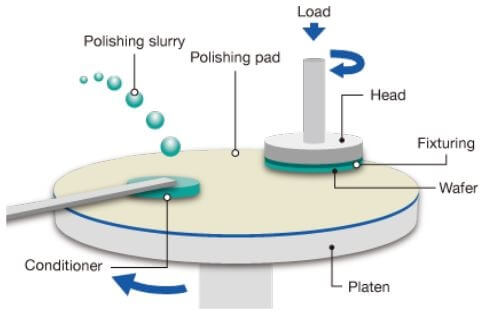
Mechanical polishing provides a good surface profile to the low and also high purity applications. But mechanical polishing not only fails to eliminate inclusions but also tends to push them farther into the surface and even exacerbate them by trying to pick up extra abrasive materials, potentially toward further corrosion areas.
Moreover, the mechanical finishing process eliminates contaminants that appear on the parts and gives bright surfaces. The electropolishing procedure, on the other hand, generates a fully featureless surface. It displays the metal’s genuine crystal structure without the distortion caused by the cold-working process, that’s always apparent while mechanical finishing methods are being used.
How does electropolishing work?
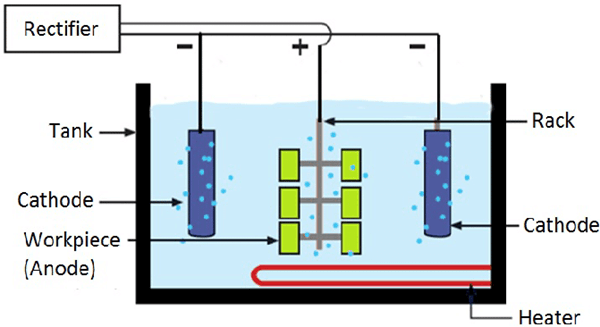
For electropolishing to work, the following few items and conditions are vital:
- Electrolyte
- Cathode
- Anode (a metal part to be electropolished)
- The temperature of electrolyte (typically 77℃ – 83 ℃)
- Amount of time of placement inelectrical current
- The density of electrical current (varies by electrolyte; the typical range is 140 – 250 amps per square foot)
In the process, a metal part will be immersed in a temperature-regulated (typically 77 ℃ – 83 ℃) electrolyte liquid and acts as the anode, while another metal part will be also immersed in the same electrolyte bath and acts as the cathode. The cathode and anode are connected by a DC power supply. When the power is on and the current passes from the anode, a layer of the anode is oxidized and dissolved in the electrolyte and further moved onto the surface of the cathode.
To put it simply: a thin layer of the metal will be chemically removed from itself. The electropolishing process could be considered the opposite of electroplating, during which a thin layer of metal will be added to the surface of itself.
In addition, electrolytes used for electropolishing are usually concentrated acid solutions. The common ones are a mixture of sulfuric acid and phosphoric acid.
Important considerations of the electropolishing process
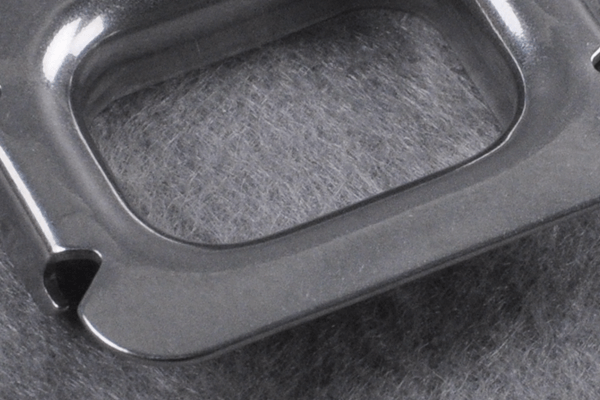
1. Surface Conditions of the work-piece
Some surface issues might result in less desirable electropolishing results. These issues include the content of non-metallic inside the metal, bad annealing, large-grained surface, insufficient cold reduction, or excessive cold working.
2. Process Controls
The electropolishing process should be controlled and standardized to ensure the best outcome. A lack of process controls produces subpar and unstable poor products.
For example, during the process of stainless steel electropolish, it is essential that the right electrolyte is used, that the temperature of the electrolyte is monitored and kept to a certain degree. Other factors such as the acid concentration, metal content, and a supply of clean ripple-free DC power supply are also very important and should be closely monitored throughout the process.
It takes a technician many years to master the art of electropolishing. It is not an easy job to set up the cathode for optimum polishing, especially in inaccessible corners or undercuts. Additionally, to prevent flawed electropolished surface finish such as gassing streaks, flow marks, and similar blemishes, it is very important to know when, where, and how to agitate the solution or move the work-piece.
The advantages of electropolishing
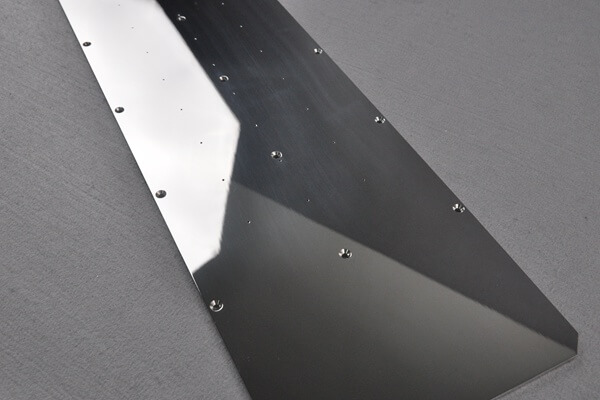
Improving corrosion resistance
Electropolishing could produce a corrosion-resistant layer on the surface of the part, for during the process of electropolishing, it could remove possible iron residue, and thus the surface of the part couldn’t interact with air to create corrosion.
Achieving better surface finish
Since the electropolishing removes a uniform layer of the workpiece, it renders the surface free of any debris or other contaminants. Mechanical polish is often done by the human hand. Hence it could not remove a uniform later from the workpiece.
Able to polish micro-areas
There are many small places such as the interior of a drill-hole, undercuts, tiny gaps that are unable to be reached by mechanical polishing. While electropolishing could pretty much polish every nooks and color of a workpiece.
Some Other advantages
Deburred corners metal parts may have jagged edges that might be dangerous in some applications, such as those in the medical world. To ensure a smooth surface, components should be exposed to a metal polishing like electropolishing, which removes a consistent layer at the microscopic level.
Electropolished metal objects have an ultraclean surface that mechanical polishing procedures cannot consistently achieve. Electropolishing, unlike mechanical polishing, eliminates a homogenous layer of surface material to create a smooth, debris-free appearance. This is a clear advantage by the electropolishing.
How to choose between electropolishing and mechanical polishing
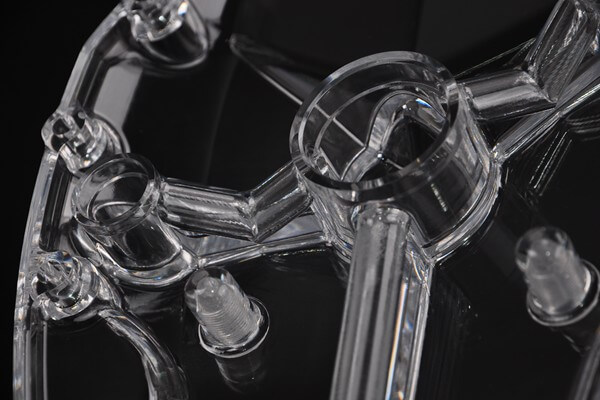
Mechanical polishing improves metal surfaces or metal parts by reducing surface roughness and it will give you a smooth surface. Furthermore, almost every type of material including stainless steel alloys, aluminum, metal finishes even mirror finish improved by mechanical polish. Mechanical polishing processes are useful for metal parts after metal welds.
But if you want burrs removal, scratches cleaning with polishing then electropolishing will give you a good service. And if a large quantity of metals parts needs to have a better surface finish, electropolishing will help to improve the production process.
Additionally, if there are only a few prototypes, the better way is to choose manual polishing or mechanical polishing, as the cost for electropolishing one prototype is quite high and suppliers who provide this service often have a minimum order quantity requirement.
Conclusion
Electropolishing and mechanical polishing both plays an important role to give the finishing touch to every form of metal. Both techniques also help to hide scratches. When compared to passivation, electropolishing equipment helps to improve stainless steel corrosion resistance by increasing the chrome to iron ratio by 4%, resulting in a 30X increase in resistance.
In conclusion, mechanical polishing never generates dangerous chemical reactions and works both metal and plastic. Electropolishing can improve corrosion resistance and help with the polishing of a large number of metal parts.
So, According to the needs and budget, knowing the differences between electropolishing and mechanical polishing, then choose the most suitable finishing services for your project.

